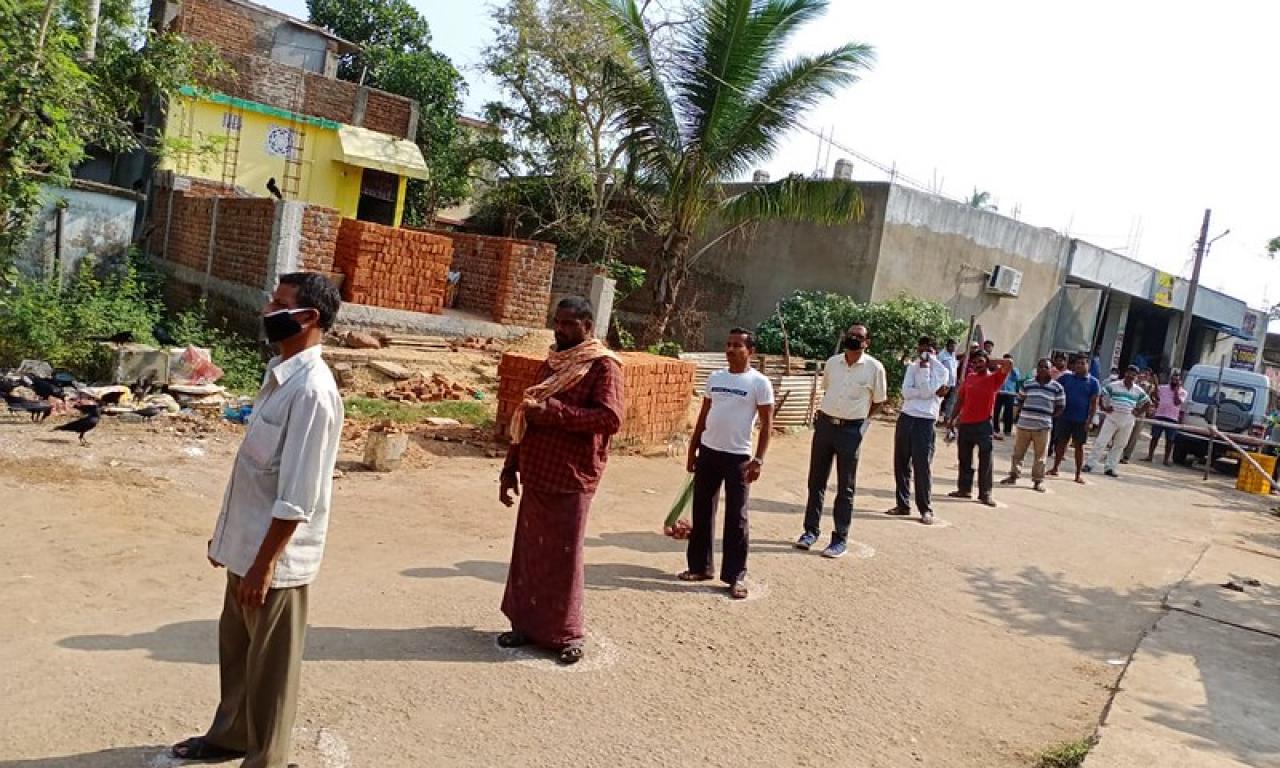
On March 25th, India initiated a strict 21-day lockdown, later extended until May 3rd and May 17th. Lockdown measures included school closures, border closure, travel bans, bans on gatherings, and bans on all transportation services except for essential goods. This initial lockdown was assessed as one of the most stringent in the world. It is estimated that around 80% of India's workforce is informal or semi-formal with minimal social nets or savings to depend on. By the beginning of May, India had registered 33,336 confirmed cases and 1,223 deaths.
Impacts on fisheries and aquaculture: During the 21-day lockdown, fishing was halted due to the closure of storage facilities, markets, and processing plants. On April 9th, India's Ministry of Home Affairs allowed fishing and aquaculture businesses to pursue their activities under conditions of adequate social distancing. Productivity levels at some shrimp processing plants were said to have been reduced to a third or fifth of their usual capacity. Processing plant operation was already hampered because they relied on migrant workers who make up 50% of the workforce in Andhra Pradesh. Many workers returned to their home states when the lockdown was announced, and are now unable to return to work due to continued restrictions on movement. In the Ernakulam district, Kerala, a fisher representative, stated 95% of factory workers are women.
A wide variety of actors in fisheries and aquaculture have experienced dire economic consequences. The COVID-19 crisis came at a particularly pivotal time for small-scale fishers as diverse spring catches were said to usually be sufficient to guarantee enough income to endure the following monsoon and annual fishing ban period. Thousands of seasonal fishing laborers were reportedly left stranded, unable to go home, and said to be living in terrible conditions. One fisher who was allowed by the government to go back at sea in his traditional non-motorized vehicle with a maximum of five people stated he did not feel safe doing so due to health concerns.
International exports were also severely affected. Frozen shrimp, which makes up 70% of India's seafood export earnings have seen a sharp slump in demand from the United States and Europe following their own lockdowns. To make matters worse, when China opened for imports again in March, a shortage of workers in processing plants made it impossible to process the shrimps. The cycle of shrimp hatchery operations also appears to have been disrupted. Import of Vannamei shrimp broodstock from the United States has been halted, delaying the breeding cycle, with a potential 20-30% fall in shrimp production as a consequence. Besides, it was estimated millions of shrimp seed and tens of thousands of broodstock may have been lost due to factors including the abrupt lockdown, farmers' unwillingness to stock farms due to low profitability, and a shortage of workers.
Lack of labor, transportation, or ice to preserve catch, and curfews leading to hundreds of boats being prevented from landing catch due to harbor closures, or forced to queue to sell their catch, were some of the many bottlenecks further handicapping the fishery sector. Dumping seafood was reported in Goa due to the inability to land fish, and Chennai where fish storage facilities are already at full capacity. One report states that in Raigad district of Maharashtra state, one hundred thousand tonnes of wild-caught seafood was thrown back at sea at the end of March. When fishers managed to sell their catch, it was said they had to sometimes settle for as little as half or one-fourth of the usual market price.
Women, who account for about half of all small scale fish workers in India, are believed to be amongst the most vulnerable in this crisis. Fish vendors, the majority being women, are unable to continue with their usual door to door selling activities. Reports surfaced of unfair treatment by the police in Kerala, who allegedly prevented them from selling their fish at the market due to doubts surrounding their status as essential food workers. These women are often the main income earners for their households and do not have other sources of income depend on.
Responses and adaptations: Fish workers were not mentioned in a national $22 billion crore relief package for the poor. The National Fish Workers Forum wrote a letter to the government at the end of March requesting a special package for fishers. India's situation is particular as the annual 61 day monsoon fishing ban period is coming up, meaning fishers' financial losses due to COVID-19 may be further compounded. The government is considering including the 21 lockdowns in the ban period, meaning that fishers could return to sea early. The government provides around $65 per fishing family during the 61-day ban, but a total compensation fund of $31.5 million is now in consideration. When this money would become available to fishers remains to be determined.
The state government of Andhra Pradesh has attempted to set the price of shrimp at INR 180 ($2.4) per kilogram. Still, traders and factories have refused to purchase at this rate, marking a discrepancy between policy and practice. Some fish workers in Kerala were said to be surviving on free rations and INR 2,000 ($26) provided by the state government. The state government in Odisha has facilitated the continuation of fish sales while enforcing social distancing measures by drawing circles on the ground at markets, indicating where people should stand. Online sales and home deliveries have surged, whereas the demand for farmed tilapia is reported to have grown as supplies of marine fish have been constrained. Some fishers have also reported they dry their fish and store them until the lockdown is over.